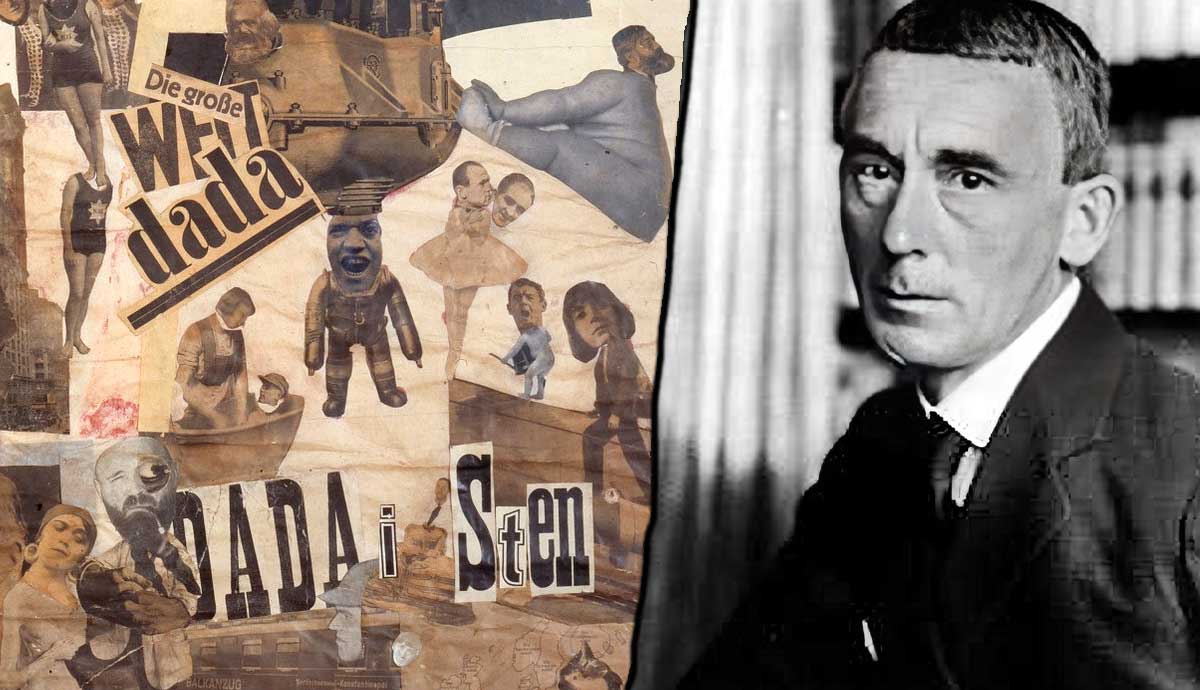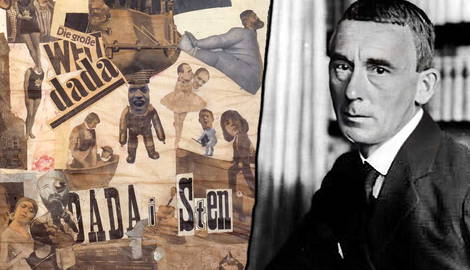
Dadaism was an avant-garde German art movement that emerged during the early twentieth century, in direct opposition to World War I. After experiencing the horror and devastation of war, artists congregated in Zurich to express their shared disdain for the hypocrisies of the bourgeois society that had led them into war. Such feelings of rebellion, anger, and disdain were the founding principles of Dadaism, which veered towards nonsensical, meaningless, anarchic and satirical. Artists took these ideas into various forms of art, poetry and performance. The movement later developed centers around the world, including Berlin, Paris and New York. We take a look at the defining features of the rebellious and non-conformist Dada art movement that paved the way for conceptual and contemporary art.
Dadaism Began in Zurich

The Dada movement began in Zurich in 1913, founded by the German writer Hugo Ball and the German artist Richard Huelsenbeck. Together they established the Cabaret Voltaire as a hotspot for experimental creativity, inviting anyone brave enough to perform or make a statement here amongst an audience of left-wing radicals any night of the week. They argued that a new brand of ridiculous art was the only answer to the senselessness of war, which he called “civilized carnage as a triumph of European intelligence.” Romanian artist Tristen Tzara called these outpourings of creative nonsense “explosions of elective imbecility.”
The Name Was Deliberately Nonsensical

Ball and Hulesenbeck named the movement ‘Dada’ for its nonsensical name, with multiple interpretations, meaning ‘yes, yes’ in Romanian, ‘rocking horse and ‘hobby horse’ in French, joyful, foolish naivete in German, and in many countries, the first words a child will speak before being indoctrinated by the language of bourgeois society. This anti-intellectual approach fit with Ball’s notion of poetry, which he argued should be moving away from conventional language in the same way that modernist art was gradually erasing form and representation.
The Movement Included Multiple Art Forms

In contrast with earlier art movements, there was no conventional, unifying aesthetic underpinning Dadaism. Indeed, the movement encompassed a huge variety of approaches and methodologies, with a distinctly ant-art approach, a desire to overthrow convention and shock audiences used to viewing art a certain way. French artist Hans Arp argued instead that the group were merely united by a desire “to destroy the hoaxes of reason and to discover an unreasoned order.” Poetry was popular with Dadaists because it was instantaneous and could be performed in the moment, before disappearing forever, a sensibility which suited the nihilistic aims of the movement. Some artists explored games and theatre, while others embraced collage, photomontage and found object sculptures as a means of tearing apart or subverting the ordinary.
Dadaism Was the First Conceptual Art Movement

Dadaism is often cited as the first conceptual art movement, as artists associated with the movement challenged the notion of art as the practice of craftsmanship and skill. They rejected traditional ways of producing art, such as painting and sculpture, arguing art should be about the idea, and the mind, rather than the act of making. French artist Marcel Duchamp was instrumental in defining this conceptual strand of Dadaism with his ‘readymade’ sculptures, which took pre-existing objects and translated them through minimal acts of intervention into works of art.
Dada Became a Worldwide Phenomenon

Dadaism began in Zurich, but its scope broadened throughout the following years, thanks to the international scope of artists involved. Tzara took his ideas to Paris, where Dadaism evolved into Surrealism, Huelsenbeck founded Club Dada in Berlin which became more heavily politicized and satirical, and Duchamp and Francis Picabia travelled to New York city, taking with them their radical ideas, which in turn led to movements including Pop Art, Fluxus and Neo Dada.









